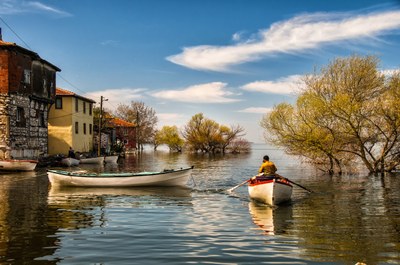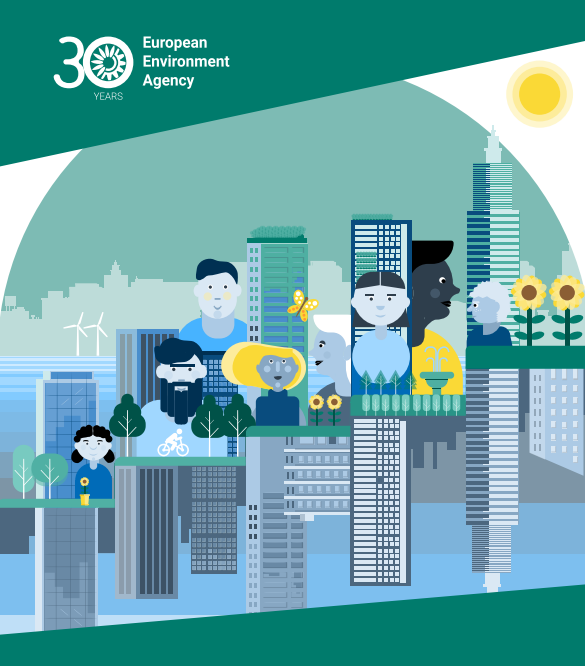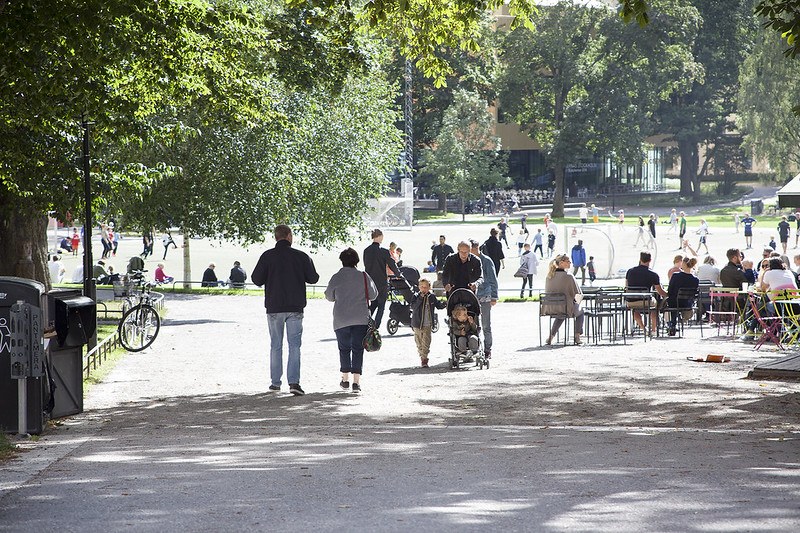All official European Union website addresses are in the europa.eu domain.
See all EU institutions and bodiesCommunities with lower levels of income and education are often more impacted by air, water and noise pollution, as well as climate change. So are the elderly, children and other vulnerable groups. In many cases, vulnerable groups are exposed to multiple environment- and climate-related hazards.
Europeans enjoy on average a good quality of life, compared with other parts of the world. Still, many communities in Europe are impacted in different ways by environmental and socio-economic inequalities at national, regional, neighbourhood and individual levels, our research shows.
The elderly, children and the poor are more likely to have their health affected or worsened by environmental hazards. The oldest and the youngest people are more vulnerable to poor air quality, pollution, noise, and extreme temperatures — both cold and heat. Children are also particularly negatively affected by noise.
People with lower levels of education, lower incomes or manual jobs tend to have less access to high quality food and worse overall health, including higher stress levels, which makes them more sensitive to environmental health hazards. These social groups also tend to be more exposed to environmental hazards, as they live, work and go to school in places with worse environmental quality and more pollution. Cheaper housing is frequently more difficult to keep cool in summer and warm in winter.
There are pronounced regional differences in social vulnerability and exposure to environmental health hazards across Europe:
- Regions with lower average socio-economic status and higher proportions of elderly people in southern and south-eastern Europe experience greater exposure to ground-level ozone and high air temperatures;
- Regions that are both relatively poorer and more polluted in terms of particulate matter (PM) are located mainly in eastern and south-eastern Europe.
Cities can play a crucial role in alleviating some of these issues within broader urban sustainability efforts.

Ensuring justice in Europe’s sustainability transition
The EEA report ‘Just sustainability transitions – From concept to practice’ addresses key questions for ensuring fairness as Europe moves ahead towards the goals of the European Green Deal. The report offers tools for policymakers to better understand and govern just transitions.
Delivering justice in Europe’s sustainability transition is multi-dimensional. It requires efforts to correct the unequal distribution of the costs of climate and environmental policies across society, as well as to alleviate the unequal burden of pollution and climate risks for places and people. At the same time, it also requires fair participation in decision-making, enabling vulnerable groups to participate and recognising and engaging with different perspectives and cultures, the EEA report argues.
What does a just transition to sustainability look like ?
Europe’s ambitions are to be achieved through sustainability transitions that require radical changes to how we live and work, especially how we produce and consume.
The large-scale systemic change required will create winners and losers according to the EEA briefing ‘Delivering justice in sustainability transitions’. To help deal with the negative impacts we must develop a deeper understanding of what ‘justice’ is and how it can be applied to avoid new or worse inequalities for people and nature.


Just resilience in urban adaptation
Climate change affects all European residents, but not everyone is impacted to the same extent. Those most impacted are typically those who are already disadvantaged due to factors such as age, health, or socio-economic status.
At the urban scale, some injustices are particularly present because of the interaction between the physical characteristics of the built environment and the often-large proportion of socially vulnerable residents. If they are not addressed, these existing injustices may be reinforced or new ones may develop.
The implementation of climate adaptation measures may not benefit all members of society evenly. For instance, marginalized communities often have less access to green spaces and face higher financial barriers in obtaining flood insurance or implementing flood-proofing strategies.
A 'just resilience' approach takes into consideration injustices in both the process and outcomes of the development of adaptation actions. It requires meaningful and inclusive participation, as well as regular monitoring, reporting and evaluation of the outcomes of the adaptation process.
Who benefits from green spaces in cities?
Parks, urban forests, tree-lined streets and riverbanks support urban well-being by providing space for rest, relaxation and exercise, and by keeping temperatures down. However, not everyone across Europe enjoys equal access to green space in cities.
The health benefits of urban green space are well recognised for children, whose physical and mental development is enhanced by living, playing and learning in green environments. The elderly also benefit significantly from visiting green and blue spaces, through improved physical health and social well-being.
Our briefing reviews the evidence of socio-economic and demographic inequalities in access to the health benefits derived from urban green and blue spaces across Europe.


How to protect the vulnerable
Many regional and city authorities are proactive in reducing the impact of environmental hazards on the most vulnerable members of society:
- Improved spatial planning and road traffic management, such as the introduction of low-emission zones in city centers reduce exposure to air pollution and noise in areas where socially vulnerable groups live.
- A ban on certain domestic heating fuels, like coal, also leads to improved air quality in low-income zones, possibly with subsidies for low-income households.
- Examples of actions aimed at protecting children from aircraft and road noise include the provision of noise barriers and protective structures in outdoor play areas.
- Many national and local authorities have put action plans in place to improve emergency response to help the elderly and other vulnerable people during heatwaves or cold spells. This is often supplemented by community or voluntary sector initiatives.

